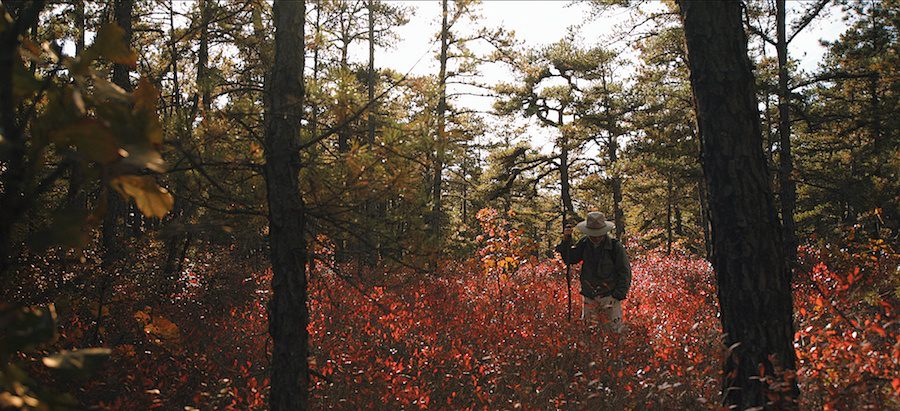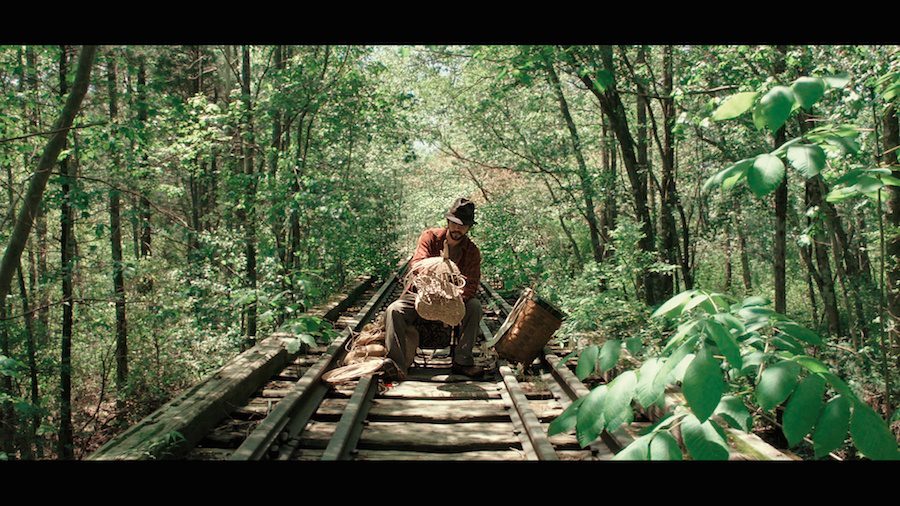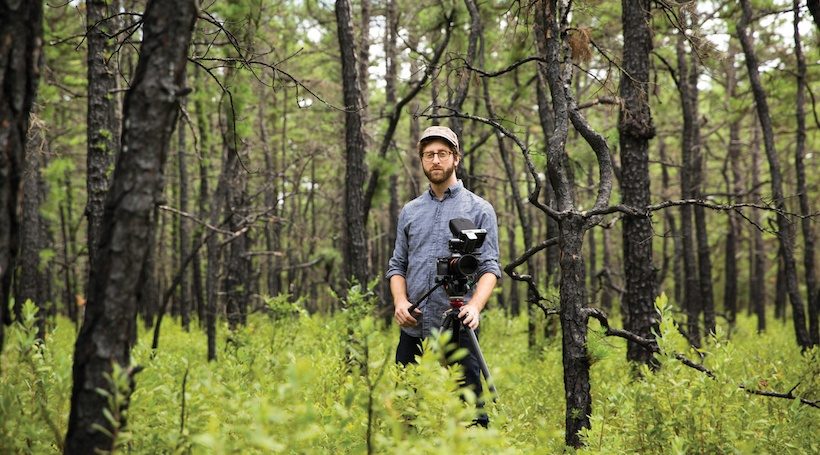When David Scott Kessler decided to make a film about the Pine Barrens, he knew it couldn’t be a run-of-the-mill documentary. The story of the Pine Barrens goes far beyond who, what, when, where and why, the filmmaker says.
So the intuitive artist set out to record a story that – much like the Pine Barrens – would constantly evolve, even after filming. Although the movie is still in production, Kessler, 41, has already organized live performances, art installations and illustrations that all relate to his documented exploration of the relationship between man and nature – specifically, man and the Pine Barrens.
That artistic voyage is precisely what landed him – along with a group of musicians – in a dirt pit in the middle of the Pinelands.
“We went out to a ruin of a town called Friendship,” Kessler says. “All that’s there is a cellar pit, so we went into the cellar with instruments, and that was the first time the band played all together, just improvising in the middle of the Pine Barrens. From that day, they were called the Ruins of Friendship Orchestra.”
That orchestra creates the musical score for Kessler’s “The Pine Barrens,” and so far, Kessler has had them only play live at screenings, reinventing the sound with each new showing.
In keeping with his untraditional style, Kessler chose to use the narrative of storytelling by a bonfire to play upon the folklore and mystery so closely associated with the Pine Barrens. Multiple people – from academics to Pinelands residents to artists – were filmed speaking around a bonfire, but the talks were filmed at different times over three years, Kessler says. He edited them to appear as though they all happened on the same night in a dark forest.

“It’s like everyone in the film is having one long conversation around the bonfire,” Kessler says. “I wanted to meld all those times and places together. I also really wanted every part of the film to feel like you’re experiencing a moment in the Pine Barrens, not sitting in someone’s office while they’re discussing it with you.”
The bonfires themselves also serve to explore other points, Kessler says.
“The Pine Barrens wouldn’t exist without fire,” he says. “It’s a fire ecology, meaning that wildfires are necessary to keep the ecosystem flourishing. Fire seems like a violent, destructive force, but without it, the Pinelands would be taken over by non-fire resistant plants. And that idea of physical rejuvenation also relates to the cultural identity in the Pine Barrens – all things are reborn through fire.”
Kessler first stumbled upon the Pinelands – and the idea to film them – when he was searching for new project ideas after completing “Shadow World,” a video series about the people he met beneath the elevated tracks of Philadelphia’s public transportation system, and realized the Pine Barrens fit the bill.
“I started thinking a lot about place as character and how the perception of a place can change over time,” says Kessler, who grew up in North Jersey. “That became a primary focus of the films I’ve worked on lately, particularly the Pine Barrens.”
He started the film about five years ago, when he set out into the pines for the first time. He was accompanied by Allen Crawford, a South Jersey artist who knows the area well. Kessler was only expecting to visit the Pine Barrens and scope out a few locations, but he ended up with much more.
“The first time Allen brought me out there, it ended up being the first day of production,” Kessler says. “Filming him in the woods was compelling enough on its own.”
Part of why those shots were so captivating rests on people’s fascination with the Pinelands. “I think people see it as being this dark, kind of mysterious place that’s full of stories and characters,” Kessler says.
“A lot of that is amplified by how close it is, too,” he adds. “We have wilderness right around the corner from us. The folklore and the mystery of the Pinelands, and the fact those things can exist so close to our daily lives, was very attractive to me.”
“Ultimately, the film is going to be about something different to different people,” Kessler adds. “It’s not a conventional, educational piece about the Pine Barrens. It kind of takes that expectation of being a documentary and undermines it.”

But for Kessler, the film does highlight one thing in particular: how we live and interact with nature in our everyday lives and what it means to still have pristine places like the Pine Barrens in an increasingly urbanized age.
“What importance does a place like the Pine Barrens have to us in our modern lives?” Kessler says. “Is it important enough for us to save?”
It’s a question that’s become particularly pertinent since Kessler started working on his project. After a natural gas pipeline proposed to go through a federally protected part of the Pine Barrens was narrowly defeated in 2014, the plan is now being reconsidered. Public hearings on the project started in late January.
It’s a hotly contested debate, and whether the Pinelands are worth protecting is a question Kessler hopes to provoke in the film, which he says will be finished this year. He’s planning to start a fundraiser soon to help with the finishing production costs and premiere “The Pine Barrens” at different festivals.
But even with the finished film, Kessler says there’s still room for the free-form and experimentation that have become centerpieces of the project. Though he plans to make a version of the film with a recorded score, Kessler still wants to keep up the live performance screenings he’s been hosting, depicting (in part, at least) his own journey through the Pine Barrens.
“I started as a complete stranger with a naïve understanding of the Pine Barrens,” Kessler says. “I wanted to go through a personal journey and live through all the stages of how one perceives a place and how perceptions change over time – and I’ve had a chance to do exactly that.”














